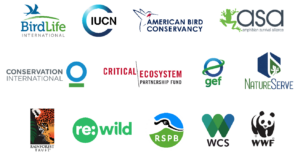
Key Biodiversity Areas
In the face of rapid biodiversity loss, Key Biodiversity Areas (KBAs) and Alliance for Zero Extinction (AZE) sites serve as critical lifelines for amphibian conservation. The Amphibian Survival Alliance (ASA) is committed to identifying and safeguarding these vital habitats, which are essential for the survival of unique amphibian species. Our efforts are geared towards providing actionable information for responsible land management and conservation prioritization.
Habitat protection is one of the most crucial tools in amphibian conservation. Given the limited resources available for conservation, information about KBAs and AZEs is vital for prioritizing sites of global significance for threatened amphibians.
In 2010, the Parties to the Convention on Biological Diversity (CBD) adopted a strategic 10-year plan to reverse the planet’s loss of biodiversity. KBAs offer a blueprint for most effectively scaling up action for our planet’s biodiversity and should be included in future plans.

Organizations and institutions interested in partnering with us in the identification and conservation of KBAs and AZEs can email [email protected].
Quick Facts
- Over 16,000 KBAs mapped worldwide
- More than 13,100 species conserved
- Includes 1,345 species of threatened amphibians
- Less than half of AZE sites are currently protected
